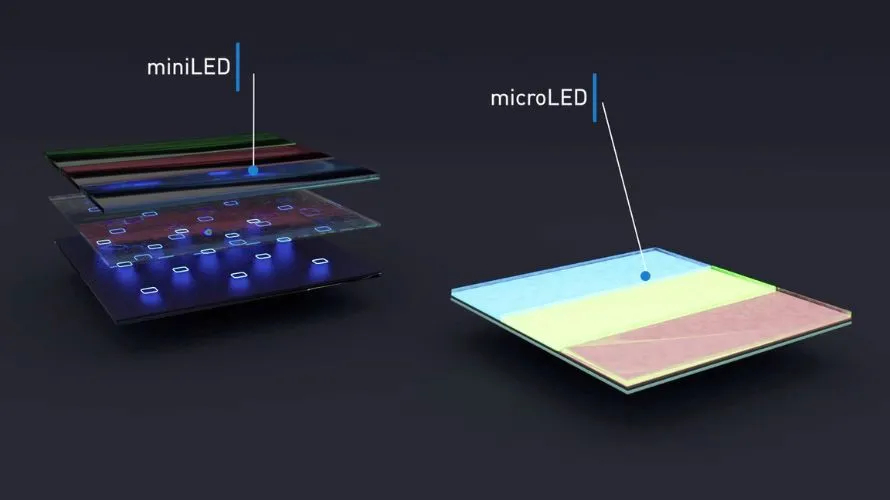In the ever-evolving world of display technology, two terms that have gained significant attention are Mini LED and Micro LED. These advanced technologies promise enhanced visual experiences and are reshaping how we view content across various devices, from televisions to smartphones. In this blog, we’ll delve into the differences between Mini LED and Micro LED, their unique advantages, and their potential applications.
What is Mini LED?
Mini LED technology involves the use of thousands of tiny LEDs (light-emitting diodes) as a backlighting solution for LCD displays. Unlike traditional LED displays, which use larger LEDs, Mini LEDs are significantly smaller, allowing for more precise control over brightness and contrast.
Key Features of Mini LED:
1. Improved Brightness Control: Mini LEDs enable local dimming zones, allowing for better contrast between bright and dark areas of the screen.
2. Higher Dynamic Range (HDR): With enhanced brightness control, Mini LED displays can produce a wider range of colors and improved HDR performance.
3. Thinner Design: The smaller size of Mini LEDs allows for slimmer and more lightweight displays, making them ideal for modern aesthetics.
What is Micro LED?
Micro LED technology takes things a step further by using tiny, individual micro-sized LEDs that serve as both the pixel and the light source. Each micro LED can emit its own light, resulting in an incredible level of brightness and color accuracy.
Key Features of Micro LED:
1. Self-Emissive: Unlike Mini LED, Micro LED displays do not require a backlight since each micro LED functions independently. This leads to true blacks and superior contrast ratios.
2. Exceptional Color Accuracy: Micro LEDs can produce vibrant colors and maintain color consistency across different viewing angles.
3. Scalability: Micro LED technology can be easily scaled, allowing for custom display sizes and shapes, making it suitable for a variety of applications.
Advantages of Mini LED
1. Cost-Effective: Mini LED technology is generally more affordable than Micro LED, making it accessible for consumers looking for high-quality displays.
2. Improved Performance: While not as advanced as Micro LED, Mini LED offers significant improvements over traditional LED technology, particularly in terms of brightness and HDR.
3. Widespread Availability: Mini LED displays are already becoming commonplace in televisions and monitors, making it easier for consumers to find and purchase.
Advantages of Micro LED
1. Unmatched Visual Quality: Micro LED displays provide the highest level of visual quality with exceptional contrast, brightness, and color accuracy.
2. Longevity and Durability: Micro LEDs are known for their durability and can offer a longer lifespan compared to traditional LED technologies.
3. Innovative Applications: The scalability and flexibility of Micro LED make it ideal for innovative applications, such as large-scale digital signage and immersive displays.
Applications of Mini LED and Micro LED
Mini LED Applications:
- Televisions: Many high-end TVs are adopting Mini LED technology for improved picture quality.
- Monitors: Professional monitors for content creation and gaming are increasingly using Mini LED for better HDR performance.
- Laptops and Tablets: Mini LED displays are being integrated into laptops and tablets for enhanced visuals.
Final Thoughts: Choosing the Right Technology
Both Mini LED and Micro LED technologies represent significant advancements in display technology, each with its own unique advantages and applications. While Mini LED is a cost-effective solution that enhances existing LCD technology, Micro LED stands out with its unparalleled visual quality and flexibility.



